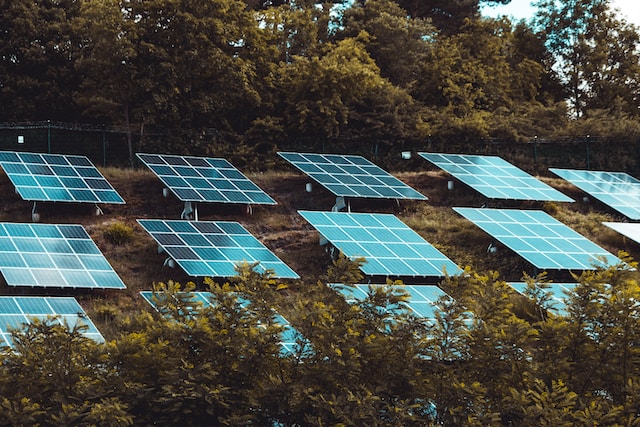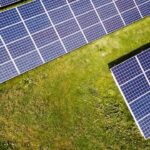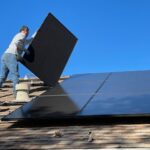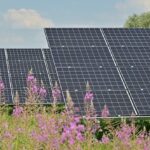Who Bears the Cost When Strong Winds Damage Solar Power Plants in China?
Preventing damage to solar power plants from adverse weather conditions is undoubtedly crucial, but what happens when solar components are genuinely destroyed, and financial losses become inevitable?
Repairing or replacing rooftop solar systems can be a costly and time-consuming endeavor. Furthermore, besides the direct damage to solar panels, powerful winds can also lead to collateral damage, such as roof tiles, posing a dual economic impact. In areas prone to severe weather, there is also the risk of solar panels falling and injuring pedestrians, resulting in secondary harm.
This article explores recent court cases in China related to compensation issues when solar power plants suffer losses due to wind-related incidents. These cases provide insights into the responsibility for compensation in such situations.
Case 1: Inadequate Wind Speed – Insurance Company’s Refusal to Pay
In the first case, Mr. Zhou installed a residential solar power plant in April 2018 and maintained property insurance annually. In July 2022, during severe weather conditions, Zhou’s solar power equipment suffered extensive damage. However, the insurance company refused to compensate him, citing that the wind speed on that day did not meet the contract’s stipulated level of eight on the Beaufort scale.
Zhou took the matter to court, seeking compensation of 73,200 yuan. Crucial information included:
- The insurance company argued that the wind speed that day was only seven on the Beaufort scale, falling short of the contract requirements.
- Meteorological records from the local weather bureau indicated that the wind speed reached eight on that day.
- The court considered the local weather bureau’s records, the testimony of village officials regarding damage caused by the wind, and the fact that large trees were blown down on-site. Based on this evidence, the court concluded that the wind speed at the time of the incident did indeed reach eight on the Beaufort scale.
Ultimately, after negotiations, the insurance company agreed to pay Zhou 59,800 yuan as a one-time settlement, and both parties expressed satisfaction with the mediated outcome.
Case 2: Solar Panels Blown Off Damaging Vehicles
In another case, Mr. Li installed solar panels on the roof of his eight-story building in 2020. During severe weather characterized by strong winds and hail, with maximum wind speeds reaching level 11 on the Beaufort scale, some of Li’s solar panels were blown off and damaged Mr. Zhong’s vehicle parked nearby.
Zhong filed a lawsuit against Li, seeking 30,000 yuan in compensation, which included 17,000 yuan for repairing the car and 13,000 yuan for depreciation and loss of value. Crucial details included:
- The incident occurred during severe weather in March 2020, with wind speeds reaching level 11, an exceptionally rare weather event in the local area.
- Zhong provided photographic evidence of the damage to his vehicle and reported the incident to the police.
- The court ruled that the extreme weather conditions, with wind speeds reaching level 11, constituted an unforeseeable and uncontrollable natural disaster. Therefore, the damage caused to Li’s solar panels, which subsequently damaged Zhong’s vehicle, was considered an act of force majeure. Consequently, Li was not held responsible for compensation.
Case 3: Solar Panels Damaged During a Typhoon
In a third case, a hotel in Kaiping City signed a contract with an environmental solar heat pump company in June 2017 for a rooftop solar power generation project. On August 23 of the same year, Typhoon “Hato” hit the area, causing some of the installed solar panels to be damaged by strong winds. Crucial information included:
- The damage occurred due to Typhoon “Hato,” with winds reaching an unusual level for the region.
- Both parties agreed that 369 solar panels were damaged, with a total value of 431,700 yuan.
- The court determined that the primary reason for the damage was an act of force majeure—the unexpected and uncontrollable Typhoon “Hato.” Since the damaged solar panels had not yet been delivered for use, the environmental solar heat pump company was deemed primarily responsible for the losses. However, considering the hotel’s inadequate management of the rooftop structure, it was ordered to bear 20% of the compensation, totaling 86,300 yuan.
Conclusion
These court cases illustrate the complexities surrounding compensation issues when solar power plants are damaged by strong winds. The responsibility for compensation often hinges on factors such as contractual agreements, the severity of weather events, and the specific circumstances of each case. Solar power plant owners, operators, and construction firms should carefully assess their insurance coverage, contract terms, and local weather patterns to better understand their potential liability and take appropriate precautions to mitigate wind-related risks.




